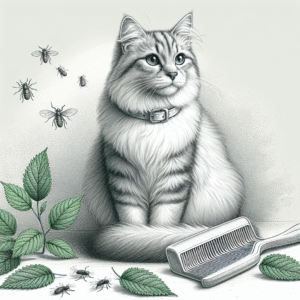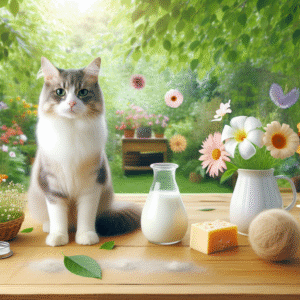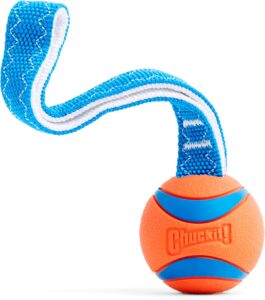
In recent years, there has been a growing interest among cat owners in preparing homemade cat food. The trend is driven by a desire to ensure that their feline companions receive the most nutritious and wholesome diet possible. While commercial cat foods are often convenient and formulated to meet basic dietary requirements, homemade cat food offers a way to customize your cat’s diet to their specific health needs and preferences. In this ultimate guide, we will explore the benefits of homemade cat food, essential nutrients to consider, recipes, preparation tips, and safety guidelines to ensure your cat’s health and well-being.
The Benefits of Homemade Cat Food
Feeding your cat homemade food has numerous advantages. Firstly, it provides total control over the ingredients, allowing you to avoid artificial additives, preservatives, and fillers commonly found in commercial cat foods. Additionally, homemade cat food can be tailored to address specific health issues, such as allergies or obesity, and can be adjusted as needed to accommodate your cat’s changing nutritional needs. Moreover, many pet owners report improvements in their cats’ coat condition, energy levels, and overall health when they switch to a homemade diet.
Essential Nutrients for Cats
When crafting homemade cat food, it is crucial to ensure that it contains all the essential nutrients that cats need to thrive. Cats are obligate carnivores, meaning their diet must be rich in animal-based proteins and fats, and they have specific nutritional requirements that differ from other animals.
Protein
Protein is the cornerstone of a cat’s diet. Cats require a higher protein intake than many other animals, and it should primarily come from animal sources. Good protein sources include chicken, turkey, beef, lamb, and fish. These proteins provide essential amino acids like taurine, which is vital for heart, eye, and reproductive health.
Fats
Fats are another crucial component of a cat’s diet, providing energy and supporting a healthy coat and skin. Essential fatty acids, such as omega-3 and omega-6, should be included in the diet. Fish oil, flaxseed oil, and chicken fat are excellent sources of these nutrients.
Vitamins and Minerals
Cats need a variety of vitamins and minerals to maintain optimal health. Key vitamins include A, D, E, and B-complex, while essential minerals include calcium, phosphorus, magnesium, and potassium. These nutrients can be provided through a balanced diet of meat, organs, and supplements if necessary.
Water
Cats have a low thirst drive, making hydration a critical consideration. Wet food is an excellent way to ensure your cat receives enough moisture. If you prepare dry homemade cat food, always provide ample fresh water.
Creating a Balanced Homemade Cat Food Recipe
When preparing homemade cat food, it is essential to create a balanced recipe that meets all of your cat’s nutritional needs. Below, we’ll outline a basic recipe and guidelines to help you get started.
Basic Homemade Cat Food Recipe
Ingredients:
– 1 pound of chicken (muscle meat, skinless)
– ½ cup of chicken liver
– 2 tablespoons of fish oil (for omega-3 fatty acids)
– 1 egg (raw or lightly cooked)
– 1 teaspoon of taurine supplement
– 1 teaspoon of calcium supplement (such as ground eggshells or bone meal)
– 1 cup of water or chicken broth
Instructions:
1. Cook the chicken thoroughly, either by boiling or baking, and chop it into small, bite-sized pieces.
2. Lightly cook the chicken liver and chop it finely.
3. In a large bowl, combine the chicken, liver, fish oil, egg, taurine supplement, and calcium supplement.
4. Mix the ingredients thoroughly, adding water or chicken broth to reach the desired consistency.
5. Divide the mixture into individual serving portions and store them in airtight containers in the refrigerator or freezer.
Preparation Tips
– **Gradual Transition:** When switching your cat to homemade food, do so gradually over the course of a week to ten days. Mix increasing amounts of homemade food with the current diet to avoid digestive upset.
– **Consistency:** Consistency in texture is important. Cats can be sensitive to texture changes, so aim for a texture similar to what they are accustomed to eating.
– **Supplementation:** While homemade cat food can be nutritious, it may not provide all the vitamins and minerals your cat needs. Consult with your veterinarian about appropriate supplementation.
Safety Guidelines for Homemade Cat Food
While homemade cat food can be highly beneficial, it is crucial to follow safety guidelines to prevent health issues.
Food Safety
– **Hygiene:** Always wash your hands, utensils, and surfaces thoroughly when handling raw meat to prevent the risk of bacterial contamination.
– **Storage:** Store homemade cat food in airtight containers and keep it refrigerated or frozen to maintain freshness.
– **Shelf Life:** Use refrigerated homemade cat food within three days and frozen food within three months.
Veterinary Consultation
Before making any significant changes to your cat’s diet, consult with your veterinarian. They can help you ensure that the new diet is balanced and meets your cat’s individual needs. They can also provide guidance on necessary supplements and monitor your cat’s health during the transition.
Conclusion
Homemade cat food can be a rewarding way to provide your feline companion with a nutritious, customized diet. By understanding your cat’s nutritional needs and following safety guidelines, you can create meals that promote their health and well-being. Remember, every cat is unique, so it’s essential to monitor your cat’s response to their new diet and make adjustments as needed. With the right approach, homemade cat food can be a healthy and delicious choice for your beloved pet.
#ChatGPT assisted in the creation of this article.








